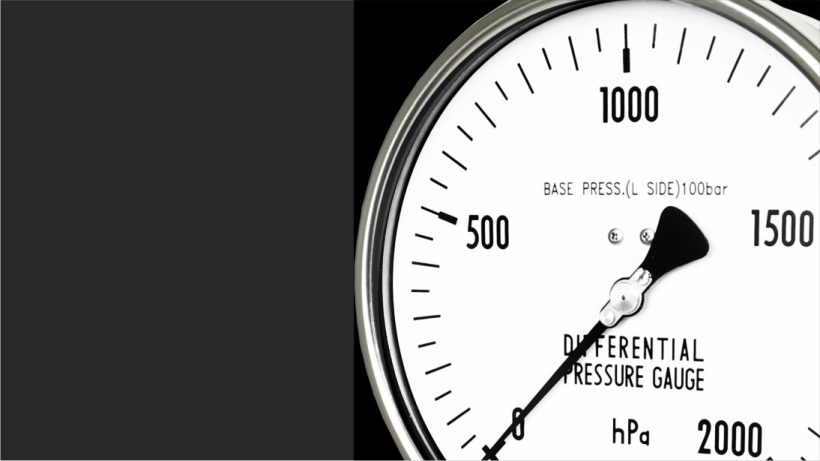In many industrial systems, pressure monitoring and control are essential to ensuring safety, performance, and efficiency. Two key components often used for these tasks are pressure switches and pressure transducers. Although they both deal with measuring or controlling pressure, they function in very different ways and are suited to different applications.
In this article, we’ll explore the differences between pressure switches and pressure transducers, their respective functions, advantages and disadvantages, and guidance on how to choose the best option for your system.
What Is a Pressure Switch?
A pressure switch is an electromechanical device that opens or closes an electrical contact when a certain set pressure is reached. It is typically used to activate or deactivate equipment such as pumps, compressors, alarms, or valves based on predefined pressure levels.
How It Works:
A diaphragm or piston inside the pressure switch reacts to pressure changes. When the pressure exceeds or drops below a preset point, the switch triggers a mechanical contact that either opens or closes a circuit.
Key Features:
-
On/off control
-
Adjustable setpoints
-
Simple installation and use
-
No continuous signal output
What Is a Pressure Transducer?
A pressure transducer (also called a pressure sensor) is an electronic device that converts pressure into an electrical signal. Unlike a pressure switch, a transducer provides continuous monitoring of pressure and transmits real-time data to a control system or monitoring device.
How It Works:
The transducer contains a sensing element (often a strain gauge) that deforms under pressure. This mechanical change is converted into an electrical output signal—typically analog (voltage or current) or digital (I2C, SPI, CAN).
Key Features:
-
Real-time, continuous pressure readings
-
High accuracy and resolution
-
Can integrate with digital control systems
-
Variety of output signal formats
Main Differences Between Pressure Switches and Transducers
| Feature | Pressure Switch | Pressure Transducer |
|---|---|---|
| Output | Discrete (on/off) | Continuous (analog or digital signal) |
| Functionality | Threshold-based control | Real-time pressure monitoring |
| Accuracy | Moderate | High |
| Cost | Generally lower | Generally higher |
| Integration | Simple electrical systems | Complex control systems (PLC, SCADA, etc.) |
| Response Time | Slower (mechanical contact delay) | Faster (electronic signal) |
| Maintenance | Low maintenance | May require calibration and protection |
When to Use a Pressure Switch
Pressure switches are best suited for systems that only require simple control or protection based on fixed pressure thresholds. Some ideal use cases include:
-
Air compressors: To stop the compressor when maximum pressure is reached.
-
Pump protection: To prevent dry running or overpressure.
-
HVAC systems: To trigger alarms or shut down components when pressure exceeds safe limits.
-
Water treatment: To switch pumps on/off based on tank levels or line pressure.
Advantages:
-
Cost-effective
-
Easy to install
-
No need for complex electronics
Limitations:
-
Not suitable for applications that need detailed data
-
Less accurate
-
Limited configurability
When to Use a Pressure Transducer
Pressure transducers are ideal for applications where precision and data logging are critical. They are commonly found in:
-
Industrial automation: For continuous monitoring and closed-loop control
-
HVAC and building automation: For accurate airflow and pressure regulation
-
Medical devices: To track patient respiratory pressure in ventilators
-
Hydraulic and pneumatic systems: For real-time pressure feedback to controllers
-
IoT and remote monitoring systems: Where pressure data is sent to cloud platforms
Advantages:
-
Accurate and stable readings
-
Integrates easily with modern control systems
-
Enables predictive maintenance and diagnostics
Limitations:
-
Higher cost
-
Requires signal conditioning or digital integration
-
May be more sensitive to environmental conditions
How to Choose Between a Pressure Switch and a Transducer
Choosing the right device depends on your system requirements. Below is a checklist to guide your selection:
1. Do you need simple on/off control or real-time data?
-
On/off → Pressure switch
-
Continuous measurement → Pressure transducer
2. What is your budget?
-
Low-budget applications can benefit from the cost-effectiveness of switches
-
Higher-end systems may justify investment in transducers
3. Do you use PLCs or digital control systems?
-
No → Switch
-
Yes → Transducer
4. Is accuracy a key factor?
-
Moderate accuracy needed → Switch
-
High accuracy and resolution needed → Transducer
5. What is the environment like?
-
Simple, low-noise environments → Switch
-
Complex or high-vibration environments → Choose rugged transducers
Using Both Devices in a Complementary Way
In many industrial systems, pressure switches and transducers are used together. For instance:
-
The transducer provides continuous pressure feedback to a control system.
-
The pressure switch acts as a failsafe, triggering an emergency shutdown if pressure goes beyond safe limits.
This combination enhances both operational efficiency and safety.
Why Choose Lefoo?
Whether you need a pressure switch, a pressure transducer, or both, Lefoo offers a comprehensive portfolio of high-quality pressure control devices. Known for reliability, precision, and affordability, Lefoo products are trusted in applications ranging from HVAC and medical equipment to water purification and industrial automation.
Key advantages of choosing Lefoo:
-
Wide range of customizable pressure sensors and switches
-
Competitive pricing
-
Global support and distribution
-
Certifications that ensure compliance with international standards
Lefoo’s technical support team can help you select the ideal product for your application and offer guidance on installation and integration.
Understanding the difference between pressure switches and pressure transducers is crucial to selecting the right solution for your application. While pressure switches are perfect for straightforward on/off control, transducers offer high-precision monitoring and real-time data that modern automation systems demand.
Evaluate your system’s needs carefully—accuracy, response time, signal output, and budget all play a role. In some cases, a hybrid approach using both devices may offer the best results.
Looking for expert advice or high-performance pressure devices? Lefoo has you covered. Reach out to our team to find the perfect fit for your system.
Ready to improve your pressure monitoring system? Contact Lefoo today and discover the ideal solution for your industrial needs.



